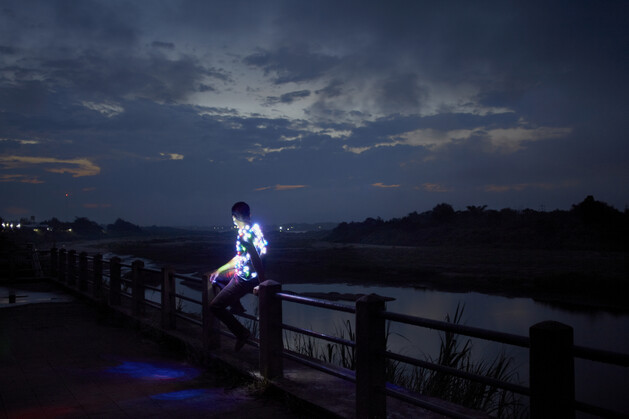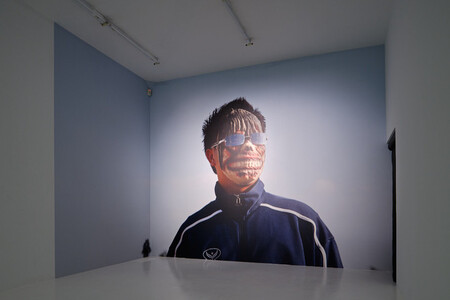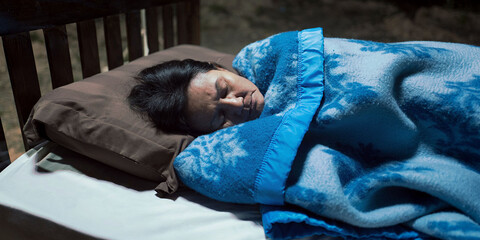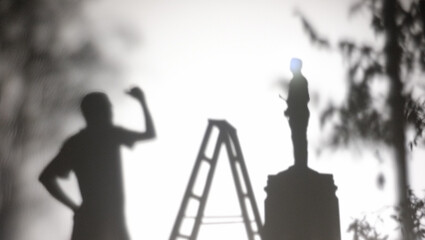Solo Exhibition Institut d’art contemporain, Lyon, France
The IAC presents Periphery of the Night, an ambitious monograph on Thai artist and filmmaker Apichatpong Weerasethakul. From films to artworks, environments to videos, an expanded conception of cinema is represented by this artist, who sees motion pictures as the deployment of our soul, an interface filtering the various processes that animate us, both visible and invisible. Presenting an immersive project for every room, in which animals and humans, ghosts and forests, the living and the dead cohabitate in slumbering interstitial worlds, the artist echoes the perceptual and cosmomorphic approaches of the IAC and the Laboratoire espace cerveau: the obscurity of these artworks is charged with subversive power, as though the experience of darkness might transform us and reactivate our conversation with the living. At the heart of this alternative half-light, the idea is to deploy a relational ecology that represents a true science of compassion.
Featuring dark rooms and comprising around twenty artworks, including unprecedented pieces, the exhibition multiplies projection media and devices, creating all kinds of initiatory environments in which a tremendous art of expansion is undertaken. Swept up in the bewitching rhythm of the videos, with their plays of light and dark and the penetrating soundscape that accompanies them, visitors are invited to circulate from one to the other in a state of altered consciousness, on the borders of wakefulness and sleep.
It is this liminal border, this nocturnal ‘periphery’ that the artist explores, having spent his own childhood on the edge of the jungle. The periphery of the night: a distinct space-time, yet nevertheless within reach, a stone’s throw from daylight. From the outset, in Apichatpong Weerasethakul’s work, plastic beauty, the subject of the gaze, is extended by a broader poetic meaning, which notably touches on language: this literary trend for metaphor permeates his works, from both interior and exterior – the artist regularly accompanies his videos with poems or allegorical tales. The image cannot take everything into account; it must be opened up, confronted with different means of perception, in order for the colours, micromovements, light, and sensations in his videos to be more acutely felt. The spatialisation of his work, far from rendering us passive, allows us to partake in this exacerbated sensoriality, allowing us to physically embrace its contours.
So it is a matter of us experimenting in turn this broader form of attention, at once acute and sensitive, which the artist accords to his inner circle and living space, capturing a strange beauty – sometimes comical or disturbing –among fragments of everyday life. His ‘video journals’, created with the small camera that he constantly keeps near him, attest to a vibrant empathy that penetrates everything it touches, to the point of blurring the limits between what belongs to the self and to others. Here, we encounter the men and women around him, human and animal friends (like his production studio Kick the Machine which juxtaposes on his website the sections ‘people’ and ‘animals’). We also see familiar faces here (such as Sakda Kaewbuadee and Jenjira Pongpas), actors encountered elsewhere, in his feature films, barely dissimulated under the mask of fictional characters.
The incomparable sweetness of the gaze that he brings to bear on these beings coexists with the bitterness of Thailand’s political situation, explicitly evoked in several videos. But beyond references to power and the army, it is in the heart of his perceptual question that Apichatpong Weerasethakul’s political gesture is rooted: for him, the camera is capable of illuminating an invisible community, by skimming the surface of reality, the network of forces that flow between beings and things, between the various forms of life (animal, plant, spectral). The technical and spiritual merge at the very core of a single process of revelation, which aims to extend our inner cinema: the ‘projection apparatus’ to which the artist compares the human spirit. Endowed with this ability to probe and foster the invisible, the moving image appears as the refuge of secret connections, a fragile sanctuary that must be preserved from exterior aggressions. The sleepy bodies that populate the videos in the exhibition are intended as the guardians of this virtual memory, switching from dream to dream, to exchange their knowledge and maintain its vitality.1
By placing us on the cusp of these exchanges, Periphery of the Night leads us along dreamlike pathways, which are embodied in a vast gallery of rhythms and energies, sometimes very distant from the diffuse calm and languor characteristic of his feature films. Using singular devices (backlighting, suspended projections, and holographic filters), the idea is to modify our biological clock, to the point of enabling us to experience new cadences and transforming us, as suddenly and discreetly as the atmosphere changes, when the light fades with the flutter of a curtain, a breeze through the trees, or when the sun shifts to the other side of the horizon.
_
1 Based on the book by Érik Bordeleau, Toni Pape, Ronald Rose-Antoinette and Adam Szymanski, Fabulations nocturnes : Écologie, vitalité et opacité dans le cinéma d’Apichatpong Weerasethakul, Open Humanities Press, 2017.
More Pictures:










